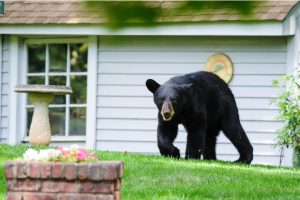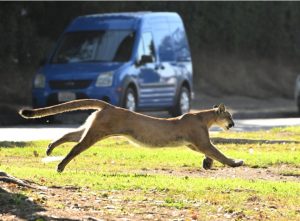It may sound counterintuitive given the shocking decline in global biodiversity in recent decades, but predatory attacks on humans by large carnivores such as bears, wolves, coyotes, cougars, tigers and lions are on the rise worldwide. Why is this happening? Can humans learn to live safely with large predators?

A study published in Plos Biology in 2023 that looked at 5,440 large carnivore attacks worldwide from 1950 to 2019 found that the number of reported attacks increased over time and that there was a socio-economic dimension to the phenomenon. People in high-income regions were more likely to be attacked during outdoor activities such as hiking or camping, as in this tragic recent case from Canada, while in low-income countries, where the majority of the attacks occurred, the victims were generally engaged in work/livelihood activities such as farming, gathering forest products, or walking to work or school.
Predator habitat is shrinking in developing countries
In the developing world, particularly India and Africa, growing human populations are encroaching on the habitats of large carnivores. In India, for example, deforestation is currently at record levels, with 6,684 km2 of forest lost between 2015 and 2020. But tiger populations are growing; there are now more than 3,600 tigers in India, an increase of 24% since 2018. With more tigers but shrinking habitat, it is perhaps unsurprising that 108 people were killed by tigers in the country between 2019 and mid-2021.

But apart from the Indian tiger, other large carnivores such as lions, leopards and wolves are declining in the developing world. In Africa, for example, lion numbers have fallen by 43% in the last 20 years due to habitat loss caused by development, overgrazing and the conversion of land to agriculture. When territorial disputes arise between male lions and one has to leave the area, there is often nowhere to go, and the lion ends up straying into human-dominated territory. It is estimated that 250 people are killed by lions every year.
Large carnivores on the rise in high-income countries
The situation is very different in Europe and North America, where until a few decades ago large carnivores were enthusiastically shot, trapped, poisoned and eradicated from vast areas. Today, thanks to changes in wildlife laws and attitudes, these animals are making a comeback: cougars (mountain lions) and black bears are recolonising their historic ranges; grizzly bear numbers are increasing in several US states; coyote populations are exploding across North America; and the reintroduction of wolves to Yellowstone National Park has led to their expansion beyond the park’s boundaries.

In Europe, rewilding efforts have expanded the wolf’s range by 25% in the last decade. In the Italian Alps, brown bears were reintroduced two decades ago and their numbers are increasing. Romania’s brown bear population has soared to perhaps 8,000 following EU hunting restrictions in 2016, and Japan’s bear population has more than doubled since 2012 to around 55,000.
We increase the risk without knowing it
As human populations grow in developed countries and more people participate in recreational activities in areas inhabited by predators, a rise in attacks in seems inevitable, especially if people engage in certain unwise behaviours. A 2016 study led by Spanish researchers found that nearly half of large carnivore attacks in Europe and North America were triggered by risky human behaviour, such as leaving children unattended (the victims of cougars and coyotes are mainly children), walking an unleashed dog (which can increase the risk of a bear attack), or tracking dangerous animals after shooting them. Moving quietly or quickly through bear habitat is another risky behaviour, as bears can react aggressively if surprised; this may have happened in April 2023 when a jogger was fatally mauled by a bear in the Italian Alps.

Food conditioning is also an issue, particularly for bears. While responsible people know not to feed wild animals, these animals can become accustomed to human food as a direct result of improper garbage storage and disposal, and food-conditioned animals can become aggressive towards humans.
So how can people live more harmoniously with large carnivores? In high-income regions, targeted information campaigns can promote appropriate behaviour to reduce the risk of dangerous encounters. And effective garbage management is crucial in natural and residential areas frequented by such animals. In low-income countries, the challenge is more complex. Protected areas need to be expanded, predator habitat restored and natural prey increased to lessen the temptation to attack livestock and people. However, with current population growth rates in developing regions, providing more space for large carnivores without exacerbating habitat encroachment and impacting on local communities is a major challenge.
Comments on this publication